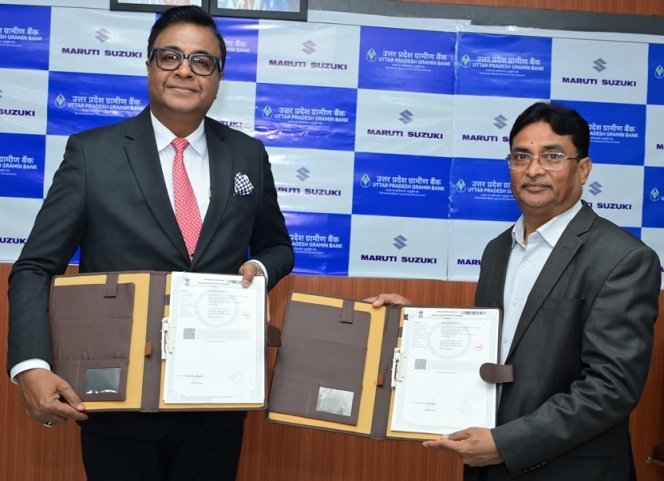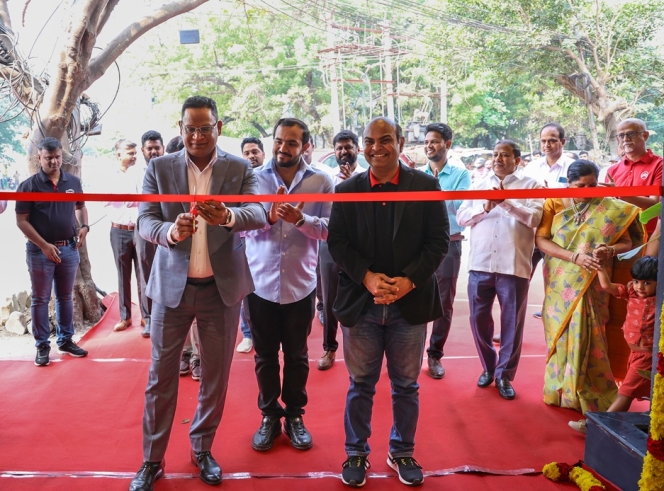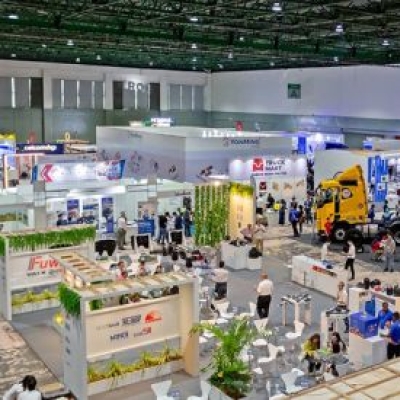New Fourth Generation Skoda Fabia Is Here
- By MT Bureau
- May 05, 2021

Skoda launched the fourth generation of its popular small car, the Fabia, at the DOX Centre for Contemporary Art on May 4, 2021.
Twenty-two years after the debut of the Fabia, Skoda has now launched the fourth-generation model built on Volkswagen's MQB-A0 platform. The introduction of the new platform and some clever engineering makes the new Fabia a more spacious car than its peers. In its latest avatar, the Fabia boasts of improved comfort features and numerous advanced safety and assistance systems previously only reserved for high-tier vehicles.
Exterior:
The new Fabia has grown, with the length increasing by 111 mm to exceed the four-metre mark at 4,108 mm and the width by 48 mm. The wheelbase has also increased from 2470 mm to 2564 mm, freeing up more space on the interiors for added comfort and freeing 50l of additional boot space to a total of 380l, the largest boot in the segment.
As shown in the design renders, the new Fabia features sculpted lines on the bonnet with dynamic proportions and the SKODA-typical crystalline structures, creating a particularly emotive look. Skoda has managed to incorporate the triangle on the Czech flag with the body lines on the front doors as a small Easter egg.
The modern light unit with LED technology features Razor-sharp headlights, as well as taillights. The full-LED headlights feature cornering and adaptive light functions.

Skoda has computed more than 3,000 CFD simulations (computational fluid dynamic) to create a design that sets industry benchmarks with a low drag coefficient of 0.28. An essential part of the car's aerodynamics is the new type of cooling shutter in the front bumper's lower air inlet. These actively adjustable slats shut when slight cooling is needed. This helps improve the aerodynamics and results in better fuel savings and lower carbon emissions at constant speeds of 120 km/hr.
At the rear, the new Fabia features a large roof spoiler with side finlets that optimise the airflow at the back. The new wing mirror housings also reduce drag and direct the airflow to the rear in a targeted manner, while the vents in the front bumper, called air curtains, help channel the air in a particular way close to the side of the body and the wheels. Twelve panels now cover a large part of the underbody instead of three in crucial aerodynamics areas. One can see Skoda's clever engineering feat in the unique plastic trims fitted in the Fabia to reduce the drag created by the wheels.
Interior:
The interior of the new Fabia is characterised by a free-standing infotainment display measuring up to 9.2 inches at the centre with a 10.25-inch digital instrument cluster for the first time. Facilitated by the new architecture, features like a heated windscreen and heated steering wheel will now debut on the Fabia.
The use of the MQB-A0 platform has helped free more space inside, making the new Fabia the most spacious car in its segment. The use of symmetry in the interior design and horizontal decorative strips emphasise the cabin's width, making it bigger and airy. Skoda is also offering fabric upholstered dashboard with contrast stitching on some models of the Fabia. The large circular AC vents are finished in chrome along with the newly designed door handles.

Making the interiors of the new Fabia colourful, Skoda is offering LED ambient lighting that allows the driver to illuminate that decorative dashboard trim in white or red along with the centre console and front door handles. As part of the LED ambient lighting package, Skoda also offers LED reading lights at the front and the rear. A three-spoke multi-functional steering wheel finished in leather adds a touch of sportiness to Fabia's cabin, along with the paddle shifter on the DSG model.
The optional 10.25-inch digital instrument cluster lets the drivers choose from layouts to suit their needs, including classic, modern, reduced and extended layouts along with a sports layout on the dynamics pack. The virtual cockpit also displays radio stations, album covers, maps and more.

Another first for the Fabia is the dual-zone Climatronic AC with rear vents that help cool the cabin faster. The AC system features eight buttons that operate all the functions.
Users can select from three different infotainment systems with the new Fabia based on the trim level selected. The entry-level system Swing features a modern 6.5-inch colour touchscreen, a radio with a digital DAB receiver and four front speakers as standard. Moving higher, the Bolero offers a radio, an 8-inch screen, a Bluetooth hands-free system and two additional surround-sound speakers in the rear doors along with wireless SmartLink and Android Auto or Apple CarPlay. The range-topping Amundsen features a 9.2-inch touchscreen with gesture control, the Laura digital voice assistant and navigation function that is online backed.

The Fabia also features outstanding NVH levels thanks to the aero-acoustic simulation methods used during the car's aerodynamic development to reduce wind noise by understanding the flow of air around the vehicle.
Connectivity:
Skoda has equipped the new Fabia's 9.2-inch infotainment system with an eSIM that lets users control specific functions of the car using the SKODA Connect app. This range-topping trim also includes options for Wi-Fi hotspot, music streaming services and maps that can be stored on the 64-GB SSD hard drive and updated online. Keeping in line with the current technology, Skoda has included five USB-C sockets for charging mobile devices – one of which can be found on the rear-view mirror to charge a dashcam.

With the help of SKODA Connect, app users can transfer their existing account into the new Fabia and use the Amundsen system's display to access weather reports and news, allow access to a personal Google calendar or warn of hazards.
Safety:
The new MQB-A0 platform has made the body of the new Fabia stiffer, offering excellent active and passive safety.
Exploiting the possibilities of the new platform, Skoda has equipped the new Fabia with Travel Assist, which provides automatic support with longitudinal and lateral steering. Features like Adaptive Cruise Control (ACC), Lane Assist, Park Assist, Blind Spot monitoring up to 70m away from the car, and Manoeuvre Assist use sensors to detect obstacles in front or behind the vehicle to apply brakes automatically and actively help in the safety of the occupants and the surroundings.

Another step up in safety, the Fabia comes equipped with up to nine airbags in the higher trims for occupants’ safety. Another standard across the range is the ISOFIX anchors and top tether anchor points on the back seats.
Powertrain:
Skoda has equipped the new Fabia with three engines from Volkswagen Group's latest EVO generation in five states of tune. Four of the five EURO 6d compliant engines produce a WLTP range of more than 900km.
The 1.0l MPI EVO three-cylinder petrol engine is available in either a 65 or 80hp tune while the 1.0l TSI EVO engine is available in either a 95 or 110hp tune. The 1.0l naturally aspirated engine is available with only a 5-speed manual while the 1.0l TSI engine is available with a choice of either with either a 5-speed manual, 6-speed manual, or 7-speed DSG. The more powerful 1.5l TSI EVO four-cylinder engine is available in 150hp guise mated to a 7-speed DSG. (MT)
Citroen India Delivers 51 C3 CNG Vehicles To Luthra Group
- By MT Bureau
- December 24, 2025
Citroen India, in partnership with its dealership La Maison Nanavati, has completed the handover of 51 Citroen C3 CNG vehicles to the Luthra Group. The ceremony took place at the Luthra Group’s headquarters in Surat.
The delivery is part of Citroen's strategy to expand its presence in tier-II and tier-III markets by providing mobility solutions to businesses and individuals.
The Citroen C3 CNG is designed for high-usage environments and daily commutes. The model includes several features tailored for the Indian market, integration of a factory-fitted CNG kit to manage running costs. A suspension system tuned specifically for local road conditions. Provisions for cabin space and air-conditioning systems designed for high-ambient temperatures.
The handover to Luthra Group represents the brand's focus on cost-efficient transportation. By targeting the regional business sector, Citroen India aims to strengthen its footprint in Gujarat and the broader Indian mobility market.
The C3 CNG is positioned as a solution for users requiring reliability and low operating expenses without compromising on ride comfort.
Maruti Suzuki India Partners Uttar Pradesh Gramin Bank For Retail Financing
- By MT Bureau
- December 24, 2025

Maruti Suzuki India has signed a Memorandum of Understanding (MoU) with Uttar Pradesh Gramin Bank, a regional rural bank, for vehicle retail financing partnership on new cars, pre-owned vehicles and commercial vehicles.
This collaboration marks the 50th retail finance partner for Maruti Suzuki India. The partnership is intended to use the bank’s network to provide credit options to a range of customer profiles, particularly in rural and semi-urban regions.
The partnership aims to increase the accessibility of Maruti Suzuki products through, tailored finance schemes designed for rural and regional customers.
Partho Banerjee, Senior Executive Officer, Marketing & Sales, Maruti Suzuki India, said, “Our partnership with Uttar Pradesh Gramin Bank marks a significant milestone as we onboard our 50th retail finance partner. This reinforces our commitment to making car ownership simpler and more affordable for customers across India. By expanding our reach through this strategic alliance, we aim to empower buyers with competitive, customer-friendly financing solutions that enhance the overall purchase experience. We remain focused on delivering seamless, tailored finance options, and this collaboration strengthens our vision of providing the Joy of Mobility to aspiring Indian consumers.”
Yadav S. Thakur, Chairman, Uttar Pradesh Gramin Bank, said, “At Uttar Pradesh Gramin Bank, empowering customer aspirations is at the heart of everything we do. Our partnership with Maruti Suzuki, a leader in the automotive industry, is a strategic step towards enhancing our service offerings and delivering greater value to our customers. This collaboration aligns with our 'Customer-First' mission, enabling us to provide accessible and affordable vehicle financing solutions. We look forward to helping more individuals and families across the country realise their dream of owning a Maruti Suzuki vehicle.”
Kia India Commences Production Of New Seltos In Anantapur
- By MT Bureau
- December 23, 2025

Kia India has started production of the latest generation Seltos at its manufacturing facility in Anantapur. The company has confirmed that prices for the mid-SUV will be announced on 2 January 2026.
The Anantapur plant, established in 2019, serves as a hub for both the Indian domestic market and international exports. The facility uses automation and a local workforce to manufacture the Seltos, which was the first model produced by the company in India.
The new model is built on Kia’s K3 platform, which has been engineered to increase structural rigidity and improve suspension damping. The vehicle has grown in size compared to its predecessor to increase cabin space and stability. It has 4,460 mm of length, 1,830 mm of width and a wheelbase of 2,690 mm.
The exterior design follows the ‘Opposites United’ philosophy, featuring a ‘Digital Tiger Face,’ LED projection headlamps, and alloy wheels with neon brake callipers.
The vehicle integrates several digital interfaces and driver assistance systems. It features an upgraded Kia Connect 2.0 suite with over-the-air (OTA) software updates and a proximity unlock function.
In terms of safety, it gets 24 features as standard, while ADAS Level 2 offers 21 autonomous features to assist the driver. The Kia Seltos SUV comes with three engine options – 1.5-litre Petrol producing 115 PS of power and 144 Nm of torque, 1.5 T-GDI Petrol producing 160 PS of power and 253 Nm of torque and a 1.5-litre diesel engine producing 116 PS of power and 250 Nm of torque.
Transmission choices include a 6-speed manual (6MT), intelligent manual (6iMT), IVT, 7-speed dual-clutch (7DCT) and a 6-speed automatic (6AT). The model will be sold in four trims – HTE, HTK, HTX and GTX – with additional option variants and an X-Line styling pack.
Gwanggu Lee, Managing Director & CEO, Kia India, said, “The roll-out of the All-New Kia Seltos marks a proud milestone for Kia India. Seltos has long set benchmarks in the mid-SUV segment, and this new generation represents a bigger, bolder, and more progressive evolution shaped by insights from Indian customers. With production now underway at our Anantapur facility, our teams are fully geared to ensure customers can take delivery of their all-new Seltos without long waiting periods. We are confident the all-new Seltos will once again redefine expectations in the segment and strengthen Kia’s leadership in India."
“The new Seltos looks fantastic. The Anantapur team, together with our supplier partners, have done an outstanding job in delivering our customers a great looking, significantly bigger, technologically progressive and safe vehicle with impressive functionality and connectivity,” he said.
- Citroen India
- Jeep
- Stellantis
- Citroen 2.0
- Shailesh Hazela
- Kumar Priyesh
- Sree Venkata Teja Kethineni
- VTK Automobiles
Citroen India Opens 126th Outlet In Chennai Under Citroen 2.0 Strategy
- By MT Bureau
- December 23, 2025

Stellantis-owned French automotive brand Citroen India has inaugurated its 126th point of sales and service (POS&S) facility in Chennai, continuing the expansion of its network under the ‘Citroen 2.0 – Shift Into The New’ strategy.
The new 3S (Sales, Service and Spares) facility is located at Chitlapakkam, near Chrompet. It is an extension of the partnership with VTK Automobiles, which now operates five Citroen touchpoints in the city. The outlet functions as a ‘Stellantis Brand House,’ allowing customers to access both Citroen and Jeep brands within a single space.
Since the announcement of the Citroen 2.0 strategy, the brand has increased its network by 48.6 percent. Over the last six months, the company added 43 points of sale through its network expansion programmes. Citroen expects to reach a total of 135 outlets by the end of the year, with further operations planned for the north, west, and east of India.
The strategy focuses on several pillars – deepening the domestic supply chain for India-centric products. Expanding the dealer footprint into Tier 2 and Tier 3 locations. Using digital tools and unified spaces for sales and aftersales services.
Shailesh Hazela, CEO and Managing Director, Stellantis India, said, “The expansion of Stellantis network further with VTK dealership in Chennai marks another important step in Citroen and Jeep India’s network growth strategy. Chennai is a key market for us, and this upgraded facility will enable us to serve our customers better with a seamless sales and ownership experience. Aligned with our Citroen 2.0 strategy, we remain committed to strengthening our dealer partnerships and building a robust, customer-centric network across the country.”
Kumar Priyesh, Director Automotive Brands, Stellantis India, said, “We have grown our network by almost 48.6 percent since we announced the Citroen 2.0 strategy and have been able to expand our operations in different parts of country: adding tier 2/3 locations while further strengthening in Metro/ Tier 1 cities. Through project Visitar, Network Expansion Program and expansion in new geographies we added over 43 POS in the last 6 months and are already in advanced stages to start additional operations in North, West and Eastern parts of the country and expected to close the year with 135 POS for Citroen.”
Sree Venkata Teja Kethineni, Dealer Principal, VTK Automobiles, said, “We’re happy to partner to this pivotal shift in automotive retail, proudly representing Jeep and Citroen. Our dual-brand strategy empowers us to deliver a truly elevated and distinctive experience – whether customers seek rugged performance or refined sophistication. With passion, professionalism and personalised care at the core, our team is committed to exceeding expectations and upholding the global standards these iconic brands represent.”
The facility includes a service centre equipped with diagnostics and digital tools. Staff members are trained across both Jeep and Citroen product lines to provide technical support and product information.






Comments (0)
ADD COMMENT